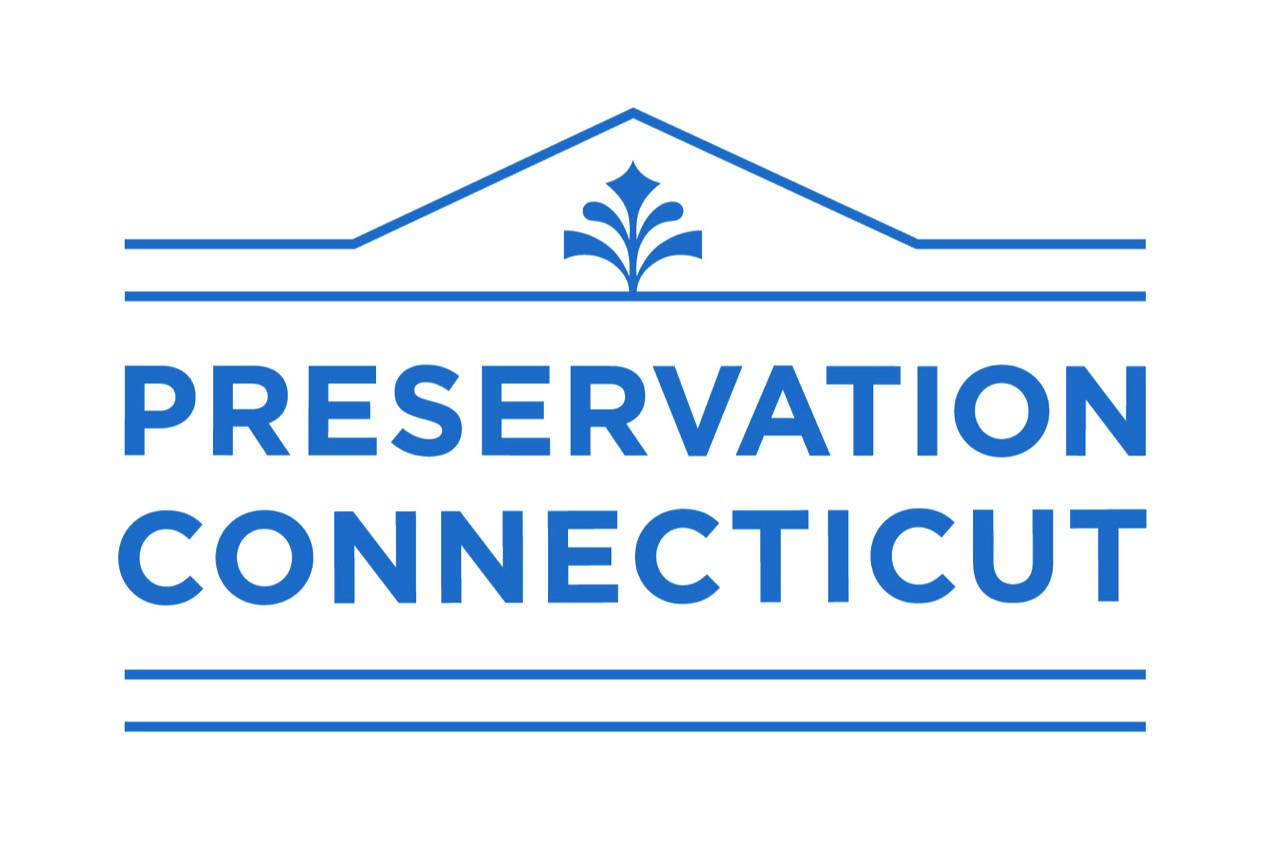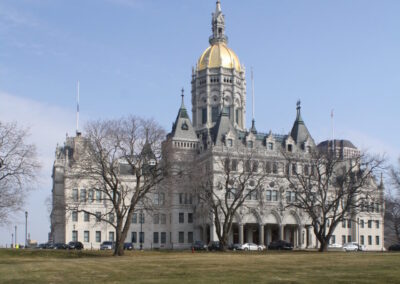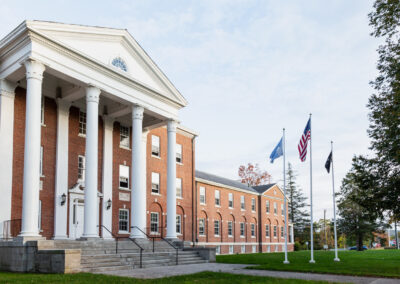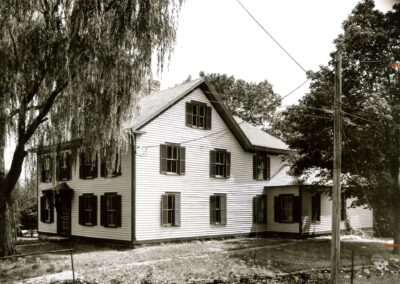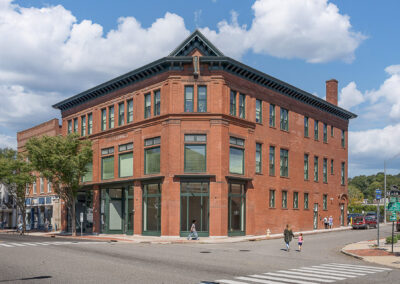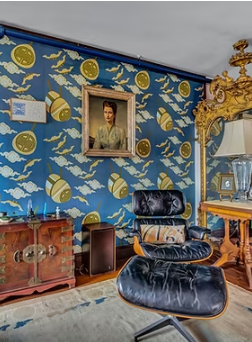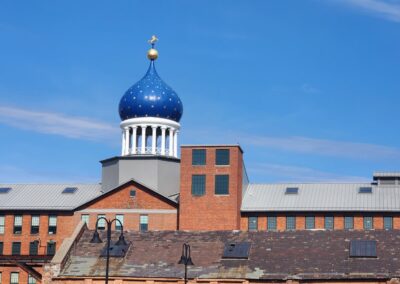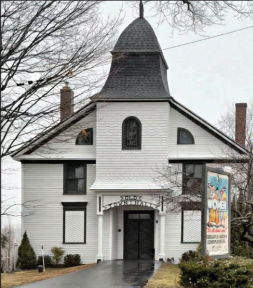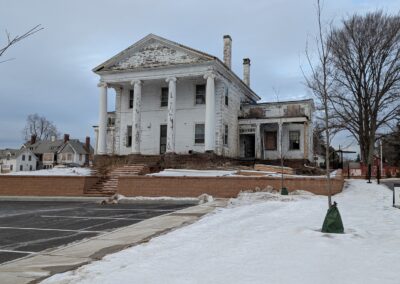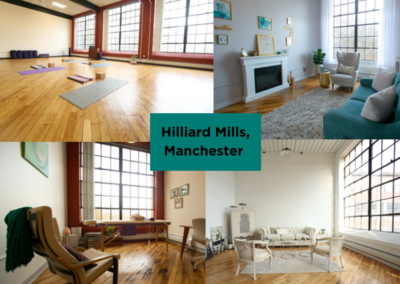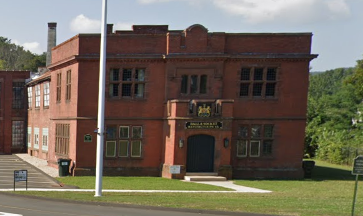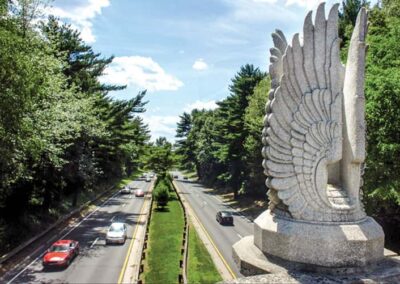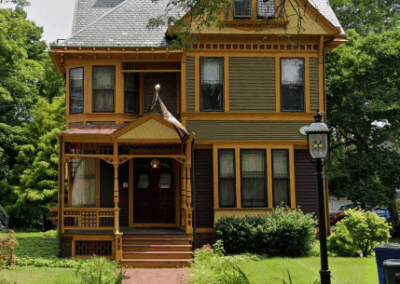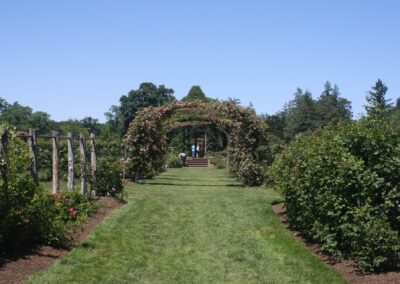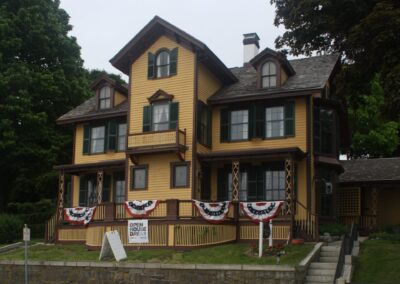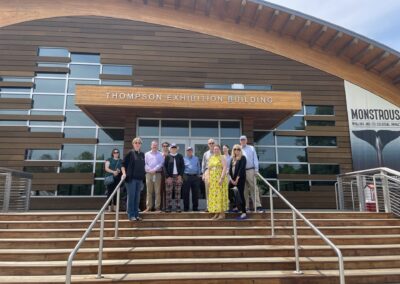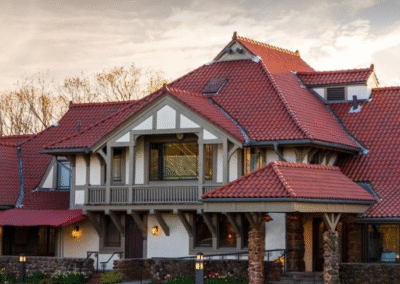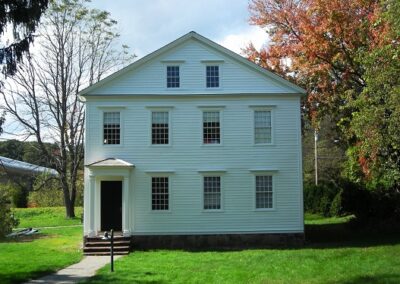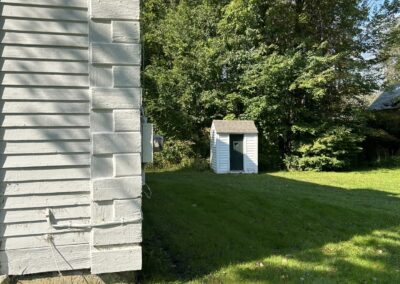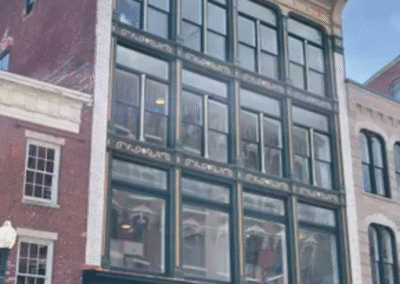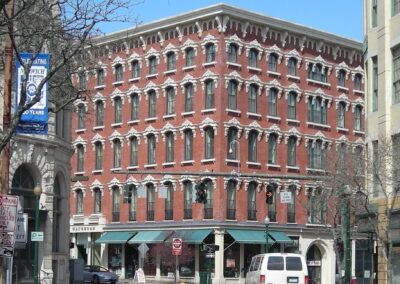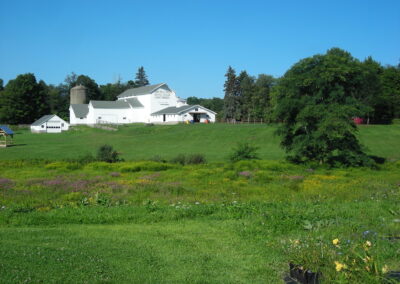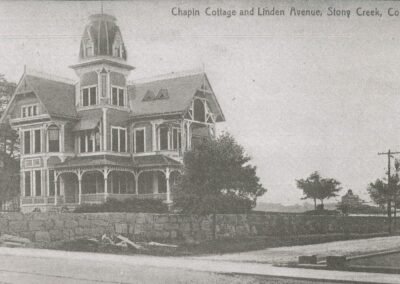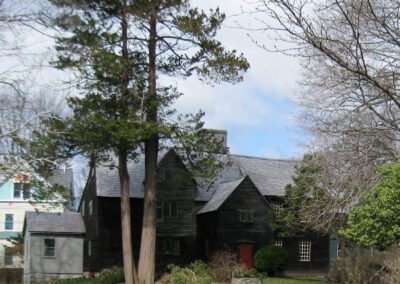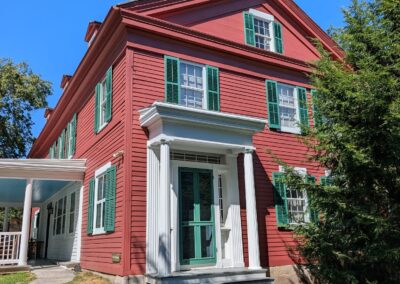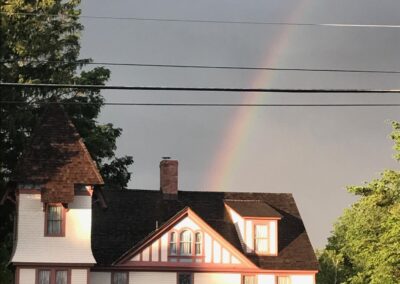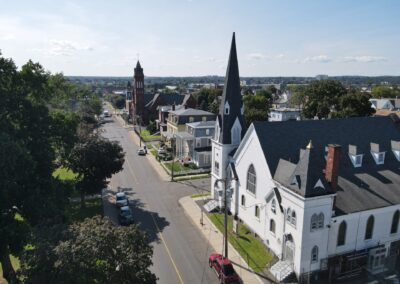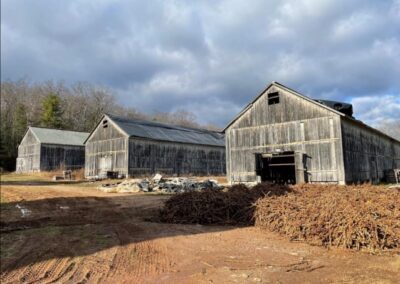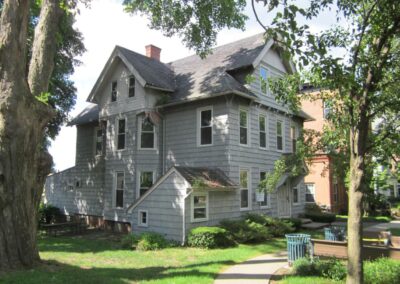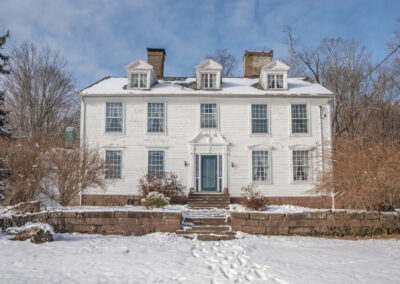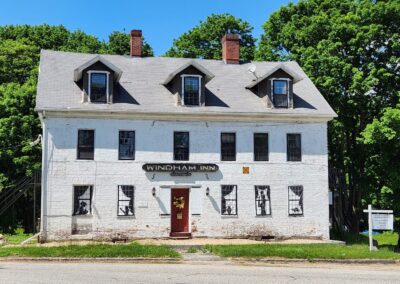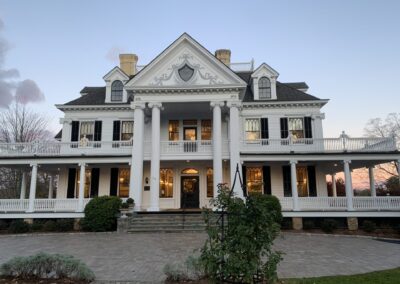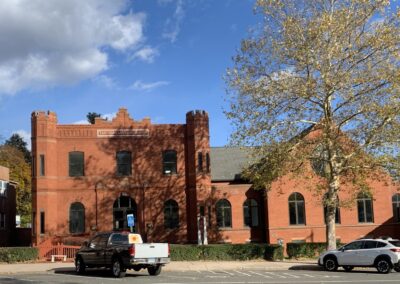2025 marks 50 years of Preservation Connecticut fulfilling our mission to preserve, protect, and promote the buildings, sites, and landscapes that contribute to the heritage and vitality of Connecticut communities.

50 years, 50 places
In celebration of this big birthday, we selected 50 places PCT has impacted-“our places.” We have festivities, articles, lectures, blogs, videos, and more planned for the entire year.
Upcoming Events:
Follow along for updates!
Counting to 50 Places
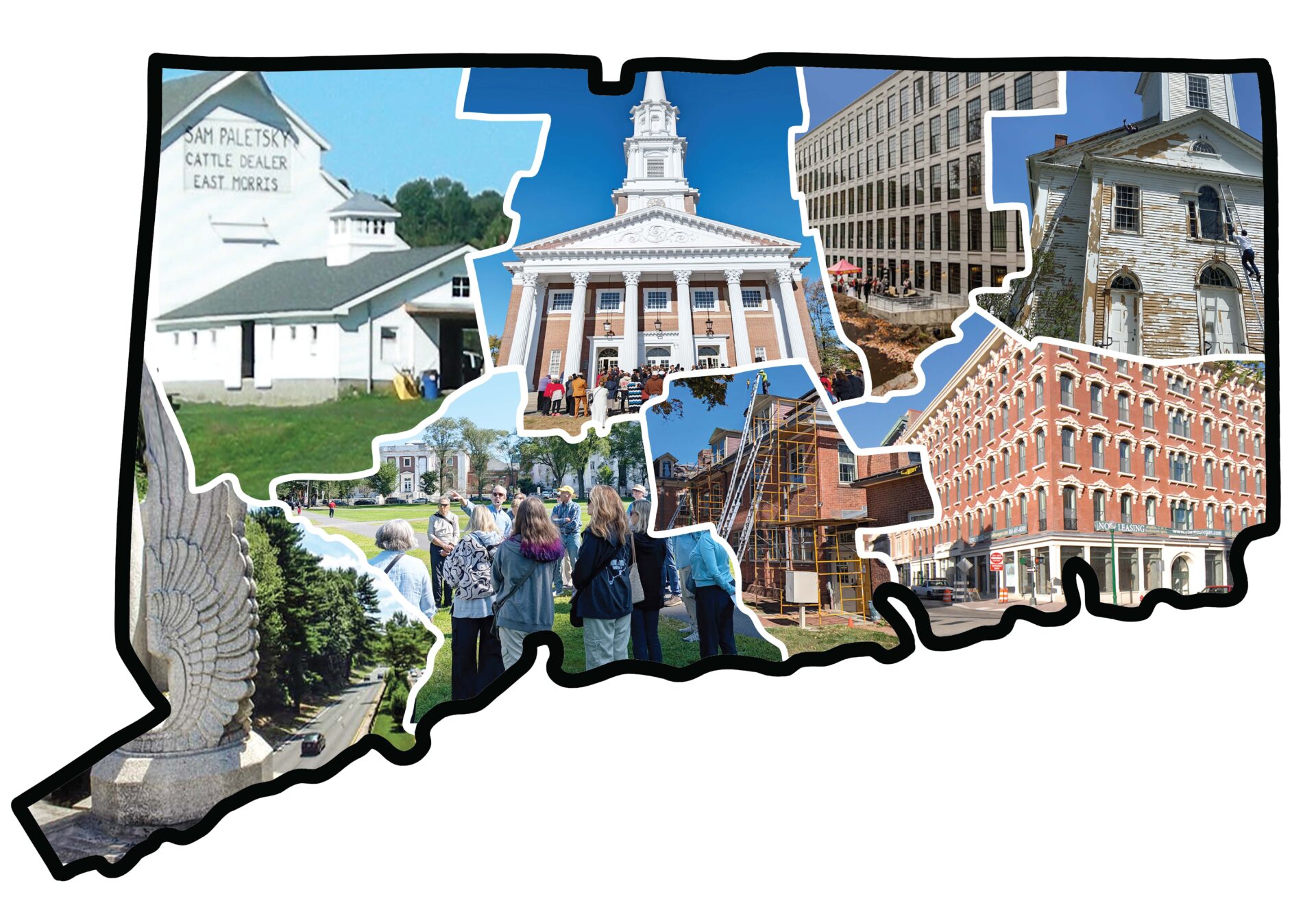
The Capitol, Hartford
This is where Preservation Connecticut started 50 years ago-PCT was established by special acts of the State Legislature in 1975.
The Shepherd Home, Middletown
Originally nurse housing for Connecticut Valley Hospital, Shepherd Home is now a permanent supportive housing facility for veterans experiencing or threatened by homelessness thanks to a $8.7 million adaptive reuse project creating 32 accessible one-bedroom and studio apartments, opening in 2019. PCT Circuit Rider, Brad Schide, assisted Columbus House (owner and developer) in attaining Federal and State historic rehabilitation tax credits.
Eleazor Lord Tavern, Norwich
In 1972, the property owner of The Eleazer Lord Tavern (c.1760) was denied a certificate of appropriateness from the historic district commission to demolish the building; he sued in response. In June 1976 the Connecticut Supreme Court upheld the commission’s decision. That was only half the job, though: government (the HDC) kept the building from being torn down but couldn’t force the owner to maintain it. Here was an opportunity for private action. By August the organization was able to buy the tavern for $45,000, and by October, the building was listed for sale.
Murray on Main, Willimantic
Located in the heart of downtown Willimantic, this is a great example of reusing historic buildings for affordable housing. Built c.1894 as a department store (H.C. Murray Company), it had been vacant for 20 years and fallen into disrepair. The nonprofit, Chrysalis Center, acquired the property in 2021 and completed the work, utilizing historical rehabilitation tax credits. The building now offers 16 apartments, offices, and retail space.
James Merrill House, Stonington
Home of award-winning poet, James Ingram Merrill (1926-1995), and a National Historic Landmark! This site is listed on PCT’s Creative Places website and included in the LGBTQ+ Places of Connecticut survey.
Coltsville, Hartford
Industrial community created by Colonel Samuel Colt for the manufacture of firearms. Complex included worker houses, educational opportunities, beer garden, and social hall. PCT helped Coltsville achieve National Historical Park designation in 2014.
Theater at Old Town Hall, Goshen
Built in 1895 for town offices and a community hall, by 1981, the town offices had moved out, but the building was actively used by the Goshen Players, a community theater troupe founded in 1949. Today, the group continues to present plays and musicals in the Old Town Hall. The building is listed on the National Register as part of the Goshen historic district and part of PCT’s theater survey.
Elmcrest, Portland
The gems of the campus are three 19th century houses: a grand c.1829 Greek Revival, home to Elizabeth Hart Jarvis (wife of gun maker, Samuel Colt); the c.1852 Oriental Revival designed by Henry Austin for Portland brownstone quarry owner Erastus Brainerd Jr.; and the 1884 Queen Anne, home of nationally recognized amateur ornithologist John H. Sage. Vacant since 2008, Preservation CT supported local preservationists and the town through a 2011 grant that underwrote the Marlborough Street National Register Historic District nomination, and a 2014 Vibrant Communities Initiative grant for a study to guide redevelopment.
Hilliard Mills, Manchester
A great example of a historic industrial space that’s been put to a new use. The former wool mill now offers apartments, restaurants and a brewery and is listed on PCT’s Mills: Making Places of Connecticut website.
Ball and Socket, Cheshire
Listed on PCT’s Mills: Making Places of Connecticut survey, the former Ball & Socket Manufacturing Company campus initially produced buttons (including “Cheshire Jewels”) and is now being transformed into a hub for arts, culture, creative commerce and community. In partnership with The 1772 Foundation, PCT awarded grants for window and entrance restorations.
Norwich Row House
The “Norwich Rowhouses,” a group of 19th century multi-family wood frame and brick buildings in Norwich that housed workers for the nearby Falls Company textile mill, was the first easement donated in perpetuity to PCT in 1983. The easement was donated in conjunction with the rehab using historic Federal historic tax credits. Today they continue to be well preserved as condos.
Dollhopf Anderson house, New Haven
1989 was the debut of the Connecticut Preservation Awards, originally called the “Residential Rehabilitation Contest,” one of the first winners was the Frederick Bonnell House, restored by Mark Dollhopf and Marjo Anderson. The pair restored the 1888 property on Whitney Avenue, “recreating late Victorian decorative schemes on both the exterior and interior with great accuracy.” The house is part of New Haven’s Whitney Avenue National Register Historic District and still well-maintained all these years later!
Elizabeth Park, Hartford
Elizabeth Park was gifted to the City of Hartford by Charles Murray Pond in memory of his late wife, Elizabeth A. Pond. The 90-acre property included Prospect Hill Farm, numerous gardens, and instructions to be “forever held and used as a public park.” Elizabeth Park officially opened in July of 1897. PCT awarded a grant for upkeep of the Caretaker’s Cottage, helped fund a conditions assessment and preservation plan for the farmstead, and awarded the Friends of Elizabeth Park an Award of Merit for the stewardship of the Elizabeth Park Rose Garden.
Lebanon Green
Listed on the PCT Town Green website, the Lebanon Green is a mile long, still used for agricultural purposes, and associated with the American Revolution. The green is also protected by a PCT easement.
Avery Copp house, Groton
Captain Rufus Avery built the house circa 1847, right next door to his own home (142 Thames Street). Its first residents were Avery’s two sons and their wives. The Avery-Copp House passed down the line of relatives and stayed in the family until 1991. Now a museum, PCT has been very involved in the Avery-Copp House, giving grants for painting, a cultural landscape assessment, as well as roof replacement of the carriage house.
Mystic Seaport
Mystic Seaport received over $42,000 in grants from PCT’s partnership with The 1772 Foundation, Inc. for roof replacements, repairs, and paint jobs over the years, not to mention numerous Circuit Rider visits and technical assistance.
Freeman Houses, Bridgeport
Built c. 1848, the Mary and Eliza Freeman houses are the last surviving houses of Little Liberia, an early 19th century seafaring community of free people of color. Of the three dozen or so structures that comprised Little Liberia, only the Freeman Houses survive on original foundations.
Temple Beth Israel, Danielson
Built between 1951 and 1961, Temple Beth Israel is a well-preserved example of a Modern Movement religious building, with Modernist features including gabled roof with exposed rafters, mixture of stone and wood exterior treatments, and the glass walls on north and south sides of upper floor. The synagogue also received grant funding from PCT and The 1772 Foundation for replacement of structural beams and windows.
New Haven Country Club, Hamden
Home to many Connecticut Preservation Awards ceremonies, the New Haven Country Club is one of the oldest golf courses in American, founded in 1898 by Yale professor Theodore S. Woolsey (1852-1929) in downtown New Haven. The club soon after moved to its current location. The current clubhouse was designed by architect Grosvenor Atterbury following traditional Scottish golf club design and completed in 1908.
Eli Whitney Boarding House, Hamden
Preservation Connecticut has been headquartered since 1989 at the Eli Whitney Boarding House in Hamden.
Strong Family Farm, Vernon
Founded in 1878, the farm is approaching its 150th year in operation. Over that time, crops have included hay, fruits, vegetables, turkeys, and Holstein cows (bred for their milk). PCT is proud to have played a small part in the farm’s long legacy, awarding multiple grants for the upkeep of the barns. Strong Family Farm is also listed on the State Register of Historic Places and the PCT Barn survey.
Ashford Academy Privy
We always hope that PCT’s awards will generate attention for good preservation projects but when we gave an award for the Ashford Historical Society ‘s restoration of the privy at the Ashford Academy in 1990 were hardly prepared for it to be covered in the New York Times—and not just in the Connecticut section, but the national edition. Thirty years later, the little building is still there, a proud witness to one of the humbler aspects of history.
Reid and Hughes, Norwich
For years, PCT supported local efforts to save this important downtown landmark, an anchor at the center of Norwich’s National Register downtown District, providing advice and intervention, grant and loan funding, and promotion. This former department store has now been successfully remodeled into a 17-unit apartment building with ground floor retail space.
The Wauregan, Norwich
Great example of a preservation success story by local preservation efforts! Historic hotel (1855) that many wanted to demolish given new life as an apartment building with commercial storefronts. In recognition of this turnaround, Dale Plummer, Art Lathrop, and Bruce Becker shared the 2007 Harlan Griswold Award for Preservation.
South Farms, Morris
The Palestsky family’s 4th-generation registered historic dairy barn-Connecticut’s largest historic farm venue. Also, a recipient of a PCT Barns Grant and Connecticut Preservation Award.
Chapin Cottage, Branford
The Isaac C. Lewis Cottage, individually listed on the National Register of Historic Places, is a Victorian seaside cottage, built in 1882, recognized for its distinctive architecture blending Gothic Revival, Second Empire, Eastlake, and Stick-style elements. A beloved landmark in Stony Creek, Preservation Connecticut has had the pleasure of hosting events here and provided guidance in the establishment of the Stony Creek Village District.
Weir Farm, Ridgefield
Weir Farm National Historical Park, CT’s only national park and the only national park in the U.S. dedicated to painting. The Trust for Public Land saved the property from development and in 1990. PCT, along with the Trust for Public Land, the Weir Farm Trust, and the State of Connecticut successfully lobbied to have the property recognized as the state’s first National Historic Site. In 2021, the site became a National Historical Park.
Hicks -Stearns Museum
Built c. 1750, the building is a contributing structure of the Tolland Green National Register Historic District and an outstanding example of the evolution from a simple design to an ornate Victorian home. PCT is proud to support the museum by facilitating maintenance and repair funding.
Waterbury City Hall
Waterbury City Hall (1915) forms the heart of a municipal complex designed by architect Cass Gilbert in the Georgian Revival style. After years of neglect, the building was threatened with demolition in 2006. A grassroots effort sparked local government officials into action and now the building shines in its restored historic appearance and function and was recognized with a Connecticut Preservation Award. (photo Robert Grzywacz)
Washington Park, Bridgeport
Part of the East Bridgeport National Historic District, the five churches in Washington Park vary in denomination and style, but all share a heavy involvement in their community, providing services and a major impact on the neighborhood. Now these historic buildings need help: new roofs, ADA accessibility, paint jobs, and more. PCT was awarded a CIF2030 grant from the State of CT to put towards these repairs.
Meadowood, Simsbury
PCT completed a State Register nomination for Simsbury’s Meadowood property which includes several tobacco sheds. In addition to helping document the history of the site, the State Register nomination facilitated access to funding to stabilize the remaining sheds. These tobacco sheds represent an important time in history for members of Connecticut’s Puerto Rican community who struggled to make a living working in the accompanying fields.
Eli Whitney Museum, Hamden
PCT has partnered with the Eli Whitney Museum & Workshop for summer camp programs and the CT Archaeology Fair, not to mention our shared historic complex related to the Eli Whitney Armory.
Roger Austin House, Wallingford
In 2011, Preservation Connecticut was part of a successful lawsuit under the Connecticut Environmental Protection Act (CEPA) to stop the Town of Wallingford from tearing down the Roger Austin house to use the land for parking. The house was subsequently sold and renovated and still continues to be a vital presence at the heart of Wallingford’s town center.
Seth Wetmore House, Middletown
Listed on the National Register of Historic Places, this c.1742 house was built by prominent citizen Judge Seth Wetmore and has been visited by Jonathan Edwards, Timothy Dwight, Aaron Burr and the Marquis de Lafayette. The house remained in the Wetmore family for over two centuries and was saved from demolition by its current owner in 2007. PCT had the pleasure of hosting an open house talk for this property.
The Windham Inn
The Windham Inn (c.1783) is located in the Windham Center Historic District and has functioned as an inn, restaurant, and apartments in its history. Vacant for many years, it is now a preservation success story. Windham Preservation Inc took on the restoration of the inn and successfully received maintenance and repair grants from PCT and The 1772 Foundation for roof repairs.
Liberty Christian Center International, Hartford
Located in the Upper Albany Historic District, this Georgian Revival Church (1913) is a preservation success story. The Hartford Preservation Alliance advocated for the church with placement on its endangered properties list and the parish later used funds from a PCT Maintenance and Repair grant to make necessary repairs to the trim and cornices of the portico.
Pond-Weed House, Darien
The oldest home in Darien (c. 1694), the Pond-Weed house has functioned as a tavern, blacksmith shop, and private home over the years. Listed on PCT’s Historic Properties Exchange in 2020, the house was purchased and the new owners meticulously restored the National Register listed saltbox. PCT recognized this great achievement with a Connecticut Preservation Award.
The Connecticut Barn
Barns in CT come in many shapes and sizes. Forms include English, New England, Bank, and Gambrel; historic uses include tobacco, dairy, poultry, and sheep. PCT documented a significant number of historic barns on our Historic Barns of Connecticut survey and also has a barn tour map.
Lounsbury House, Ridgefield
Built in 1896 in the Neo-Classical style for Phineas C. Lounsbury, former CT governor, who was inspired by the Connecticut State Building at the Chicago World’s Fair. Now owned by the town of Ridgefield, the Lounsbury House serves as a community center for all. PCT was delighted to use this community resource as the venue for its Golden Anniversary Celebration.
Salvation Army Citadel, Manchester
The Citadel is a preservation success story. Constructed in the Military Gothic style in 1908, the Citadel continuously operated as a Salvation Army chapel. In 2001, the Salvation Army wanted to upgrade their space and proposed demolishing the existing building. CT’s preservationists, including PCT, got wind of this and stepped in. Meetings were set up between CT’s preservation partners and Salvation Army officers and they were able to come up with a compromise. Architects drew up new plans that maintained the Citadel to use as office space, but included an addition off the rear for a new chapel.
Questions?
Contact Kristen Hopewood at khopewood@preservationct.org
